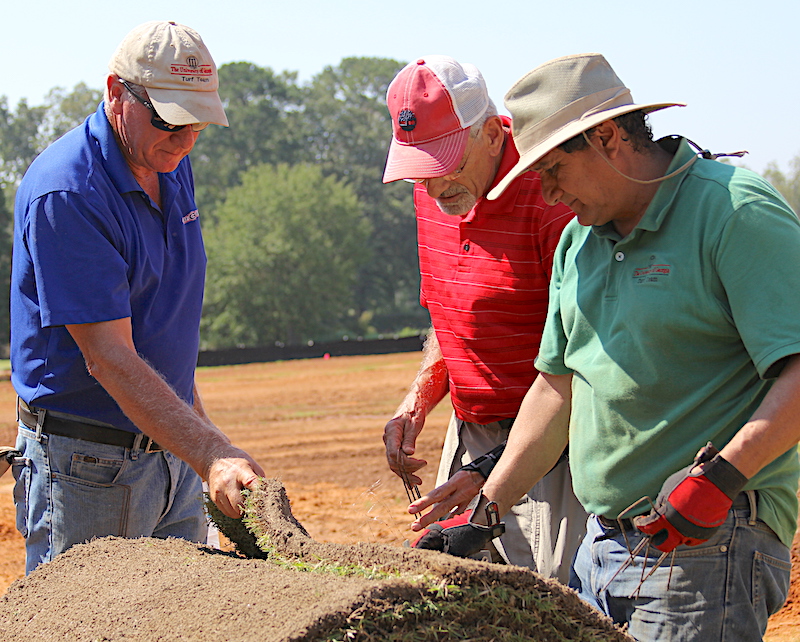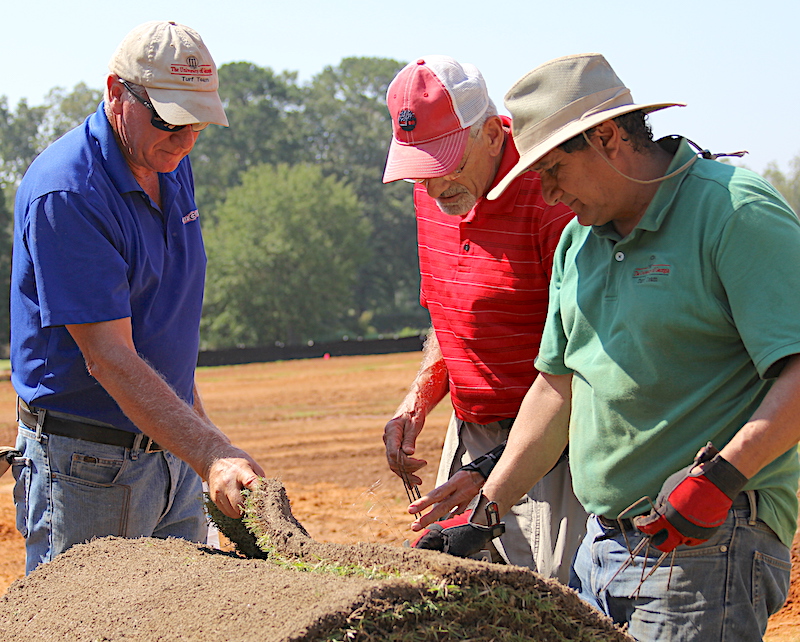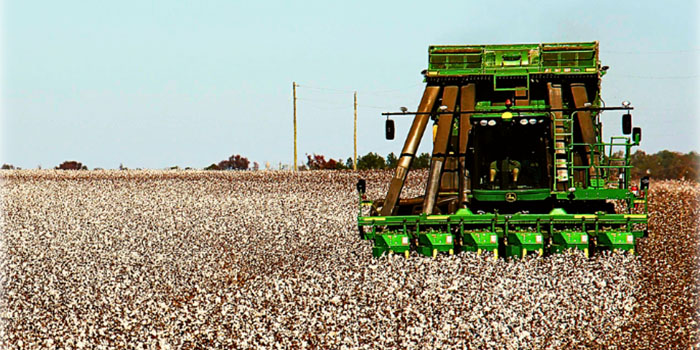About a week ago, I heard from a couple of sod producers that spring sales of turfgrass sod were strong and they were worried about potential shortages of popular species like Bermudagrass and zoysiagrass. I wondered if these were isolated incidences or an industry-wide issue.
As the University of Georgia Cooperative Extension turfgrass specialist, I am based on the UGA campus in Griffin and work closely with UGA turfgrass researchers and Georgia’s turfgrass producers. To determine whether only a few growers were looking at unexpected shortages of grass, I began calling sod producers across the state to conduct an informal survey. To date, I have talked with a representative sample of producers of various farm sizes and locations throughout Georgia.
I found a few recurring themes. First, most producers said that they are experiencing the strongest winter and spring sales season they have ever had. As I have traveled around the state the last few months, I have seen many full trucks of sod on their way to a new lawn, ball field or landscape project.
The second recurring comment was that producers are either “out” or “nearly out” of zoysia, especially fine-textured zoysia cultivars like ‘Zeon’ and ‘Emerald’. The 2019 Sod Producers Survey projected that there would be lower inventories of zoysia this year than in 2017 and 2018.
As a species, zoysia is gaining in popularity throughout Georgia. Couple increased popularity with a wet and overcast 2018 growing season and the decline in inventory is not unexpected. However, the strong spring 2019 sales have placed additional pressure on inventories of a relatively slower-growing species.
While fine-textured zoysia grasses are in the greatest demand and have the lowest inventory, the medium- and coarse-textured cultivars are also experiencing strong sales with declining inventories.
The third thing I discovered is that, while Georgia sod growers are worried about the current inventory of grass, producers are optimistic. Sod fields are in a constant state of growth and recovery.
Inventory is thin now, but fields that were harvested last summer and fall are maturing — the spring weather has been helpful — and producers foresee inventory improving in four to six weeks (approximately mid-June).
Sod growers are “pushing” fields in an attempt to fulfill orders for this year. One producer stated that the push to increase growth will be passed along to the consumer because of increased fertilizer prices early in the year.
Lastly, Bermudagrass inventory was less precarious than zoysia. Some producers are running low on Bermudagrass inventory while others reported normal inventory. Interestingly, it is not strictly a noncertified ‘Tifway’ issue. Some producers indicated they were low on certified and noncertified Bermuda grasses.
Referring back to the 2019 Sod Producers Survey, Bermudagrass inventory was projected to be consistent with 2018 and it is the species grown in the greatest volume. Considering the initial inventory, volume and growth rate, it would be expected that the Bermudagrass supply would be more hit-and-miss than other species.
Through my conversations, I heard producers indicate they are consciously managing inventory. They are employing various techniques including restricting sales to only longtime or regular customers, limiting the amount of grass they sell, not quoting larger jobs or orders, and increasing prices.
This is a new problem for the turf industry and one I view as an indicator of a strong economy and growth and development throughout Georgia. While the landscape industry may be finding it difficult to find Georgia-grown sod, hopefully their spring business is prospering and will continue to do so throughout 2019.
For the latest research-based information on turfgrass from UGA Extension, visit www.GeorgiaTurf.com.





